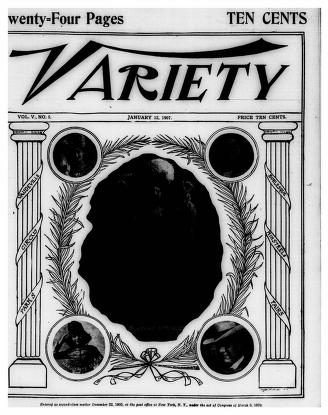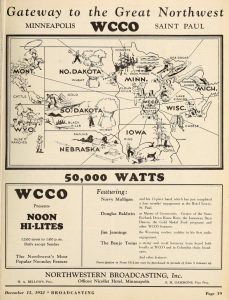Since the launch of the app, we have been busy producing work that examines Arclight search results and exploring the exciting questions and answers it provides for media historians. Hopefully the works below provide useful case studies on ways you can utilize Arclight, as well as inspiration for new and creative uses of Arclight!
“Variety’s Transformations: Digitizing and Analyzing the First Thirty-Five Years of the Canonical Trade Paper”
Film History, Vol. 27, No. 4 (2015)
Eric Hoyt, Derek Long, Tony Tran, and Kit Hughes
 If you have used the Media History Digital Library, Lantern, or Project Arclight, it is most likely you have encountered Variety in digital form. This article goes into detail in how we digitized over 100,000 pages of Variety for media historians to access, search, analyze, and transform. In discussing this process, we explore how our (invisible) labor and decisions have implications on performing historical research in digital contexts, ranging from the accuracy of OCR to reflecting on the relationship between the original and digital texts.
If you have used the Media History Digital Library, Lantern, or Project Arclight, it is most likely you have encountered Variety in digital form. This article goes into detail in how we digitized over 100,000 pages of Variety for media historians to access, search, analyze, and transform. In discussing this process, we explore how our (invisible) labor and decisions have implications on performing historical research in digital contexts, ranging from the accuracy of OCR to reflecting on the relationship between the original and digital texts.
We also showcase the benefits and potentials that emerged from this digitization process. Using multiple methods of analysis—topic modeling, Scaled Entity Search with Arclight, and quantitative content analysis combined with traditional archival work—we look at Variety’s shifts in film and radio coverage to highlight the new depths and different viewpoints that digitization can offer us.
“Hacking Broadcasting History’s Data: Station Call Signs, Digitized Magazines, and Scaled Entity Search”
Media Industries Journal, Vol. 2, No. 2, (2015)
Kit Hughes, Eric Hoyt, Derek Long, Kevin Ponto, and Tony Tran
 Illustrating Arclight’s ability to work with scale and large entity lists, this article employs Arclight and Scaled Entity Search (SES) to analyze the trending patterns of 2,002 radio station call signs across the Media History Digital Library. After elaborating on how SES functions as both a technical procedure and an interpretive framework, we discuss the process of creating our list of radio call signs and the Arclight results. With a particular focus on WCCO Minneapolis, we use SES to compare WCCO with other major stations and explore the relationships between local radio stations, advertising strategies, and the broadcasting trade press.
Illustrating Arclight’s ability to work with scale and large entity lists, this article employs Arclight and Scaled Entity Search (SES) to analyze the trending patterns of 2,002 radio station call signs across the Media History Digital Library. After elaborating on how SES functions as both a technical procedure and an interpretive framework, we discuss the process of creating our list of radio call signs and the Arclight results. With a particular focus on WCCO Minneapolis, we use SES to compare WCCO with other major stations and explore the relationships between local radio stations, advertising strategies, and the broadcasting trade press.